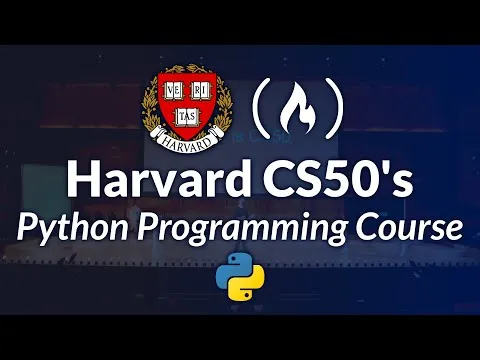
Leveraging Parallel Streams for Fast Data Processing in Java 
This course teaches how to use parallel streams to improve the speed of data processing in Java. It covers the fundamentals of parallelism, how to use it to optimize performance, and when to avoid it. ▼
ADVERTISEMENT
Course Feature
![]() Cost:
Cost:
Free Trial
![]() Provider:
Provider:
Pluralsight
![]() Certificate:
Certificate:
Paid Certification
![]() Language:
Language:
English
![]() Start Date:
Start Date:
On-Demand
Course Overview
❗The content presented here is sourced directly from Pluralsight platform. For comprehensive course details, including enrollment information, simply click on the 'Go to class' link on our website.
Updated in [February 21st, 2023]
What does this course tell?
(Please note that the following overview content is from the original platform)
Parallelism is an amazing feature brought by the Stream API in Java 8.
In this course, you will learn how parallel streams are working under the hood, how to use them to improve the performances of your applications, and when to avoid them.
Along with the implementation of the map / filter reduce algorithm, the Stream API brings an amazing feature: the possibility to conduct the processing of your data in parallel. Going parallel is as simple as calling a parallel() method, something many developers are tempted to do. In this course, Leveraging Parallel Streams for Fast Data Processing in Java, you will learn what is happening under the hood, and how parallelism has been implemented in the Stream API. First, you will see that going parallel may improve the performances of your computations greatly, but may also ruin your application. Next, you will discover how to understand when things are working, which will give you the keys you need to decide when to go parallel and when to stay away from it. Finally, you will analyze the situations where things are not behaving as expected. By the end of this course, you will gain better understanding of parallelism as it is: a complex topic that you can grasp with simple ideas, so that you can use what you will learn immediately.
We consider the value of this course from multiple aspects, and finally summarize it for you from three aspects: personal skills, career development, and further study:
(Kindly be aware that our content is optimized by AI tools while also undergoing moderation carefully from our editorial staff.)
What skills and knowledge will you acquire during this course?
By taking this course, learners will acquire knowledge and skills related to the Stream API's parallelism feature in Java 8. They will learn how to use parallel streams to improve the performance of their applications, when to avoid them, and how to understand when things are working. Additionally, they will gain a better understanding of parallelism and be able to use what they have learned immediately.
How does this course contribute to professional growth?
This course provides learners with an understanding of the Stream API's parallelism feature in Java 8, which can be used to improve the performance of applications. By learning how to use parallel streams, when to avoid them, and how to understand when things are working, learners can leverage their knowledge to develop their career in software engineering, data science, or computer science. They can also use this knowledge to pursue further education in these fields, such as a master's degree in computer science or a PhD in data science. Additionally, learners can further their knowledge by exploring related topics, such as distributed computing, data structures, and algorithms, as well as other programming languages, such as Python, and other Java 8 features, such as lambda expressions. This course thus contributes to professional growth by providing learners with the knowledge and skills to pursue a career in software engineering, data science, or computer science, as well as the ability to further their knowledge in related topics.
Is this course suitable for preparing further education?
This course provides a great foundation for learners who are interested in pursuing further education in software engineering, data science, or computer science. It provides an understanding of the Stream API's parallelism feature in Java 8, which can be used to improve the performance of applications. Learners can use this knowledge to explore related topics, such as distributed computing, data structures, and algorithms, as well as other programming languages, such as Python, to gain a better understanding of how parallelism works in different languages. Additionally, they can look into other Java 8 features, such as lambda expressions, to gain a better understanding of the language. All of these skills can be used to prepare for further education in these fields.
Course Provider

Provider Pluralsight's Stats at AZClass
Pluralsight ranked 16th on the Best Medium Workplaces List.
Pluralsight ranked 20th on the Forbes Cloud 100 list of the top 100 private cloud companies in the world.
Pluralsight Ranked on the Best Workplaces for Women List for the second consecutive year.
AZ Class hope that this free trial Pluralsight course can help your Java skills no matter in career or in further education. Even if you are only slightly interested, you can take Leveraging Parallel Streams for Fast Data Processing in Java course with confidence!
Discussion and Reviews
0.0 (Based on 0 reviews)
Explore Similar Online Courses

Making Your Research Captivating

Reducing Product Risk

RDBMS PostgreSQL

Intro To PostgreSQL Databases With PgAdmin For Beginners

PostgreSQL: Client Applications

Mastering SQL using Postgresql

Database Design and Basic SQL in PostgreSQL

PostgreSQL: Advanced Queries

Spatial SQL with Postgres : A language for geographers

Learn SQL Using PostgreSQL: From Zero to Hero

PostgreSQL Essential Training


Start your review of Leveraging Parallel Streams for Fast Data Processing in Java